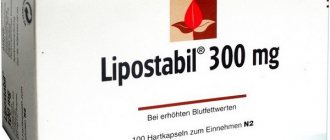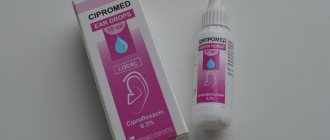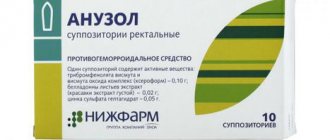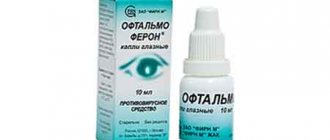Release form and composition
Dosage form of Rumikoz - capsules: size No. 0, with a white body and a pink-brown cap; contents – spherical microgranules from light yellow to yellowish-beige color (6 or 5 pieces each in blister packs, 1 or 3 packs in a cardboard box, respectively).
Active substance: itraconazole – 100 mg in 1 capsule.
Auxiliary components: poloxamer (lutrol), sucrose, hypromellose, wheat starch, black iron oxide.
Capsule composition: titanium dioxide, gelatin, iron oxide red, sunset yellow, quinoline yellow, azorubine.
Pharmacological properties
Pharmacodynamics
Rumicosis is a broad-spectrum antifungal drug of artificial origin and related to triazole derivatives. It inhibits the production of ergosterol, an important component of the cell membrane of fungi.
Itraconazole exhibits pharmacological activity against yeast-like fungi and yeasts (Candida spp., including Candida krusei, Candida glabrata and Candida albicans, Cryptococcus neoformans, Geotrichum spp., Trichosporon spp., Pityrosporum spp.), dermatophytes (Epidermophyton floccosum, Microsporum spp. , Trichophyton spp.), Penicillium marneffei, Aspergillus spp., Pseudallescheria boydii, Histoplasma spp., Blastomyces dermatitidis, Paracoccidioides brasiliensis, Cladosporium spp., Fonsecaea spp., Sporothrix schenckii, as well as other molds and yeasts.
Pharmacokinetics
When taken orally, the maximum bioavailability of itraconazole is observed when the drug is taken immediately after a meal. Its maximum level in blood plasma is recorded 3-4 hours after administration.
The equilibrium concentration of the active component of Rumikoz in plasma 3-4 hours after taking the drug is 2 μg/ml (when a dosage of 200 mg is prescribed 2 times a day), 1.1 μg/ml (when a dosage is prescribed 200 mg 1 time a day) and 0.4 mcg/ml (when prescribing a dosage of 100 mg 1 time per day). With long-term therapy, equilibrium concentration is achieved within 1-2 weeks. The active ingredient of the drug binds to plasma proteins by 99.8%. It penetrates well and is distributed throughout all organ systems and tissues. The content of itraconazole in bones, skeletal muscles, lungs, stomach, liver, spleen, kidneys is 2-3 times higher than its content in plasma.
Itraconazole accumulates in keratin tissues, especially the skin, in concentrations 4 times higher than those in plasma, and the rate of elimination is determined by the rate of regeneration of the epidermis.
Concentrations of itraconazole in plasma are not determined 1 week after discontinuation of Rumicosis; however, therapeutic concentrations of the substance remain in the skin for 2–4 weeks after completion of a four-week course of treatment. In the vaginal mucosa, the therapeutic concentration of itraconazole remains stable for 2 days after completion of a three-day course of treatment (daily dose was 200 mg) and 3 days after completion of a one-day course of treatment (dosage was 200 mg 2 times a day). The therapeutic concentration of Rumicosis in the keratin of the nail plates is detected 1 week after the start of therapy and remains for 6 months after completing a three-month course of treatment.
Itraconazole is also excreted in the secretions of the sweat and sebaceous glands and is metabolized in the liver, forming active metabolites. One of them, hydroxy-itraconazole, has an antifungal effect similar to itraconazole in vitro.
Itraconazole is eliminated from blood plasma in two stages. The terminal half-life is approximately 24–36 hours. From 3 to 18% of the dose taken is excreted through the intestines; less than 0.03% of the dose is excreted through the kidneys. Approximately 35% of the dose taken is excreted as metabolites in the urine within 1 week.
In patients with renal failure or impaired immunity (neutropenia, AIDS, organ transplantation), the bioavailability of itraconazole is usually slightly reduced. In patients with liver cirrhosis, there is a decrease in the bioavailability of this substance and an increase in its half-life.
pharmachologic effect
A synthetic broad-spectrum antifungal drug, a triazole derivative. Inhibits the synthesis of ergosterol in the cell membrane of fungi, which determines the antifungal effect of the drug.
Itraconazole is active against dermatophytes (Trichophyton spp., Microsporum spp., Epidermophyton floccosum), yeast-like fungi and yeasts (Cryptococcus neoformans, Pityrosporum spp., Trichosporon spp., Geotrichum spp., Candida spp., including Candida albicans, Candida glabrata, Candida krusei), Aspergillus spp., Histoplasma spp., Paracoccidioides brasiliensis, Sporothrix schenckii, Fonsecaea spp., Cladosporium spp., Blastomyces dermatidis, Pseudallescheria boydii, Penicillium marneffei, as well as against other yeasts and molds.
Indications for use
- onychomycosis caused by dermatophytes and/or molds and yeasts;
- candidiasis affecting the skin or mucous membranes (including vulvovaginal candidiasis);
- fungal keratitis;
- pityriasis versicolor;
- dermatomycosis;
- deep visceral candidiasis;
- systemic mycoses: histoplasmosis, blastomycosis, sporotrichosis, aspergillosis, paracoccidioidomycosis, candidiasis, cryptococcosis (including cryptococcal meningitis), as well as other systemic and tropical mycoses.
Contraindications
- simultaneous use of drugs that are metabolized with the participation of the CYP3A4 isoenzyme and are capable of increasing the QT interval (cisapride, mizolastine, dofetilide, astemizole, quinidine, sertindole, pimozide, terfenadine, levomethadone), oral forms of midazolam and triazolam, HMG-CoA reductase inhibitors metabolized with participation of the CYP3A4 isoenzyme (for example, lovastatin, simvastatin), ergot alkaloid preparations (ergotamine, ergometrine, dihydroergotamine, methylergometrine);
- lactation period;
- hypersensitivity to the components of Rumicosis.
Carefully:
- chronic renal failure;
- liver diseases and liver failure;
- severe heart failure;
- hypersensitivity to other azole antifungals.
Rumikoz is prescribed to pregnant women and children only in exceptional cases, after a careful assessment of the benefit-risk ratio.
Analogues of the drug according to ATC codes:
IRUNIN ITRAZOLE ITRACONAZOLE ITRACONAZOLE-RATIOPHARM CANDITTRAL ORUNGAL ORUNGAL ORUNGAMIN ORUNIT All
Before using the drug RUMIKOZ you should consult your doctor. These instructions for use are for informational purposes only. For more complete information, please refer to the manufacturer's instructions.
Instructions for use of Rumikoz: method and dosage
Rumicosis should be taken orally after meals.
Recommended dosage regimens for fungal diseases:
- pityriasis versicolor: 2 capsules 1 time/day for 7 days;
- fungal keratitis: 2 caps. 1 time/day for 21 days;
- ringworm of smooth skin: 2 caps. 1 time/day for a 7-day course or 1 capsule. 1 time/day for 15 days;
- oral candidiasis: 1 caps. 1 time/day for 15 days;
- vulvovaginal candidiasis: 2 caps. 2 times/day for 1 day or 2 caps. 1 time/day for a course of 3 days;
- lesions of highly keratinized areas of the skin (hands and/or feet): 2 caps. 2 times/day for 7 days or 1 capsule. 1 time/day for 30 days.
Depending on the dynamics of the clinical picture of the disease, the doctor can adjust the duration of treatment.
Due to the fact that in immunocompromised patients (for example, in patients who have undergone organ transplantation, with neutropenia or acquired immunodeficiency syndrome), the bioavailability of itraconazole obtained orally may be reduced, these categories of patients may require a 2-fold increase in the daily dose.
Recommended dosage regimens for Rumicosis for systemic mycoses:
- candidiasis: 1-2 caps. 1 time/day course, depending on the course of the disease, from 3 weeks to 7 months. If the disease has an invasive or disseminated form, the dose is increased to 2 caps. 2 times/day;
- aspergillosis: 2 caps. 1 time/day for 2-5 months. If the disease has an invasive or disseminated form, the dose is increased to 2 caps. 2 times/day;
- sporotrichosis: 1 caps. 1 time/day for a 3-month course;
- histoplasmosis: 2 caps. 1-2 times/day for, as a rule, 8 months;
- chromomycosis: 1-2 caps. 1 time/day for 6 months;
- blastomycosis: depending on the severity of the disease, the dose can vary from 1 caps. 1 time/day up to 2 caps. 2 times/day, duration of treatment – 6 months;
- paracoccidioidomycosis: 1 caps. 1 time/day for a 6-month course;
- cryptococcosis (excluding meningitis): 2 caps. 1 time/day, the duration of therapy, depending on the severity of the disease, can vary from 2 months to 1 year;
- cryptococcal meningitis: 2 caps. 2 times/day for 2-12 months (as maintenance therapy).
Depending on the type of infection and the characteristics of the disease, the doctor may adjust the dose.
For onychomycosis, one of two treatment regimens is used:
- pulse therapy: 2 caps. 2 times a day for 7 days, a total of 2 (for lesions of the nail plates of the hands) or 3 (for lesions of the nail plates of the feet) such courses are carried out with intervals of 3 weeks between courses;
- continuous therapy (for lesions of the nail plates of the feet without lesions or with lesions of the nail plates of the hands): 2 caps. 1 time per day for a 3-month course.
Since itraconazole is cleared from the skin and nail plates more slowly than from blood plasma, optimal mycological and clinical effects are achieved 2-4 weeks after the end of treatment for skin lesions and 6-9 months after the end of treatment for nail diseases.
Use for liver and kidney pathologies
Metabolism of the drug is carried out by the liver. Large dosages of Rumicosis capsules are potentially dangerous by increasing the load on the liver, which is undesirable for some groups of patients. If liver failure is mild, you can take the medicine, but it is necessary to undergo regular examinations to identify the dynamics of deterioration in the functioning of the organ.
For mild to moderate liver dysfunction, it is recommended to reduce the dosage of the drug by half. Taking the medicine is allowed only as prescribed by a doctor.
In case of moderate to severe liver failure, taking the drug is contraindicated.
If your kidney function is impaired, you can take the medicine. It is important to take into account the risk of decreased bioavailability of the drug, and therefore patients in this group need to adjust the dosage to achieve the expected therapeutic effect. It is necessary to change the treatment regimen and increase the recommended dosage in consultation with your doctor.
Side effects
- allergic reactions: skin rashes, urticaria, itching, angioedema; rarely – Stevens-Johnson syndrome (erythema multiforme exudative);
- dermatological reactions: photosensitivity, alopecia;
- from the central and peripheral nervous system: dizziness, headache, peripheral neuropathy;
- from the digestive system: reversible increase in the activity of liver enzymes, diarrhea/constipation, loss of appetite, nausea, abdominal pain, dyspepsia, vomiting, hepatitis; in very rare cases - severe toxic liver damage, including acute liver failure with a fatal outcome;
- other: dark coloration of urine, edematous syndrome, hypercreatininemia, hypokalemia, pulmonary edema, congestive heart failure, menstrual irregularities.
special instructions
In patients with cryptococcosis of the central nervous system and immunodeficiency, Rumicosis can be prescribed only when first-line drugs cannot be used in these cases or have proven ineffective.
Women of childbearing age should use reliable methods of contraception throughout the course of treatment until the first menstruation after its completion.
Itraconazole has a negative inotropic effect, and therefore increases the risk of developing heart failure. For this reason, patients with chronic heart failure (including a history) can be prescribed Rumicosis only in cases where the expected benefit outweighs the potential risks.
In renal failure, the bioavailability of itraconazole may be reduced and dose adjustment may be required.
When using antacid drugs simultaneously, Rumikoz must be taken at least 2 hours after them.
For patients with achlorhydria and patients receiving proton pump inhibitors or histamine H2 receptor blockers, the drug is recommended to be taken with acidic drinks.
There are very rare cases of severe toxic liver damage, including acute liver failure and death. This side effect of Rumicosis has been observed in people with concomitant liver diseases and people undergoing treatment with drugs with hepatotoxic effects. In this regard, during treatment it is necessary to regularly monitor liver function.
If neuropathy develops, Rumicosis therapy should be discontinued.
No negative effect of the drug on the speed of reactions and the ability to concentrate was noted.
Use during pregnancy and lactation
Studies of the drug's effect on rats have established that high dosages of itraconazole have a negative effect on fetal development. This led to severe developmental anomalies incompatible with life and early miscarriage. At the same time, the administration of small doses of the drug did not have a negative effect on the fetus. In this regard, taking Rumicosis tablets is allowed only if a woman is diagnosed with severe systemic mycosis, potentially threatening the life of the fetus. In cases where therapy is not vital, this medication should be avoided in pregnant women.
A small amount of the active substance passes into breast milk. This practically cannot harm the child’s health, but if the baby has diseases it can be dangerous. Therefore, it is recommended not to take Rumikoz during lactation, or to stop breastfeeding during therapy.
Drug interactions
If possible, calcium channel blockers should not be used concomitantly with itraconazole, as they may also have a negative inotropic effect, which may be enhanced by this combination.
Potent inducers of the CYP3A4 isoenzyme (rifabutin, rifampicin, isoniazid, carbamazepine) significantly reduce the bioavailability of itraconazole, significantly reducing its effectiveness, so this combination is undesirable.
Potent inhibitors of the CYP3A4 enzyme (eg, erythromycin, clarithromycin, indinavir and ritonavir) may increase the bioavailability of itraconazole.
Drugs that reduce gastric acidity reduce the absorption of itraconazole.
Itraconazole is able to suppress CYP3A4-mediated metabolism of drugs, as a result of which their effects, including side effects, may be enhanced or prolonged. After discontinuation of Rumikoz, the concentration of itraconazole in the blood plasma decreases gradually, depending on the dose used and duration of therapy. These data should be taken into account if combination therapy is necessary.
When prescribing the following drugs simultaneously with Rumikoz, their concentration in the blood plasma, action and side effects should be monitored:
- antitumor drugs (trimetrexate, busulfan, rose vinca alkaloids, docetaxel);
- calcium channel blockers (for example, verapamil or dihydropyridine), metabolized by the CYP3A4 isoenzyme;
- oral anticoagulants;
- immunosuppressive drugs (tacrolimus, cyclosporine, sirolimus);
- some glucocorticosteroids (dexamethasone, budesonide, methylprednisolone);
- HIV protease inhibitors (indinavir, ritonavir, saquinavir);
- HMG-CoA reductase inhibitors metabolized with the participation of the CYP3A4 isoenzyme;
- other drugs: intravenous midazolam, repaglinide, alfentanil, carbamazepine, rifabutin, cilostazol, alprazolam, digoxin, eletriptan, ebastine, disopyramide, buspirone, halofantrine, reboxetine, brotizolam.
Reviews about Rumikoz
According to reviews, Rumicosis is most effective in the treatment of fungal diseases when used as an element of long-term combination therapy. Cases of complete recovery after completing one course of treatment are extremely rare.
Many patients who took the drug noted good results in the treatment of nail fungus, pityriasis versicolor, candidiasis and other diseases caused by fungi. However, there are also references to unpleasant side effects. They are very diverse, and the most severe of them are associated with liver dysfunction. Therefore, when undergoing antifungal therapy with Rumicosis, it is necessary to constantly monitor the patient’s condition. The disadvantage is the rather high cost of the drug.
Cost and analogues
The drug Orunit has a similar composition to Rumicosis
When prescribing Rumikoz, price plays an important role, since the drug is often prescribed for long-term use. A package of 6 tablets will cost about 500 rubles, 15 capsules - about 1200 rubles. The drug is produced by a Russian pharmaceutical company and is therefore available in all major pharmacies.
If it is necessary to replace Rumikoz capsules with analogues, you should pay attention to drugs with a similar composition.
| Analogues of the drug Rumikoz | ||
| Name | Price | Manufacturer |
| Orunite | 740 rubles (15 capsules) | Russia, "Obolenskoye FP" |
| Kanditral | 990 rubles (14 capsules) | India, Glenmark |
| Itrazole | 1200 rubles (42 capsules) | Russia, "Vertex" |
| Irunin | 830 rubles (14 capsules) | Russia, Veropharm |
| Orungal | 3050 rubles (14 capsules) | Italy, Janssen |
If drugs based on itraconazole are not suitable for the patient, you should consult with your doctor about the possibility of taking Fluconazole, Nystatin or Griseofulvin tablets. The cost of Fluconazole is about 80 rubles for 2 capsules, Nystatin – 150 rubles for 100 tablets, Griseofulvin – 250 rubles for 20 tablets. The listed drugs exhibit high activity against yeast fungi, but are not effective enough against infection with dermatophytes and other pathogenic fungi.








